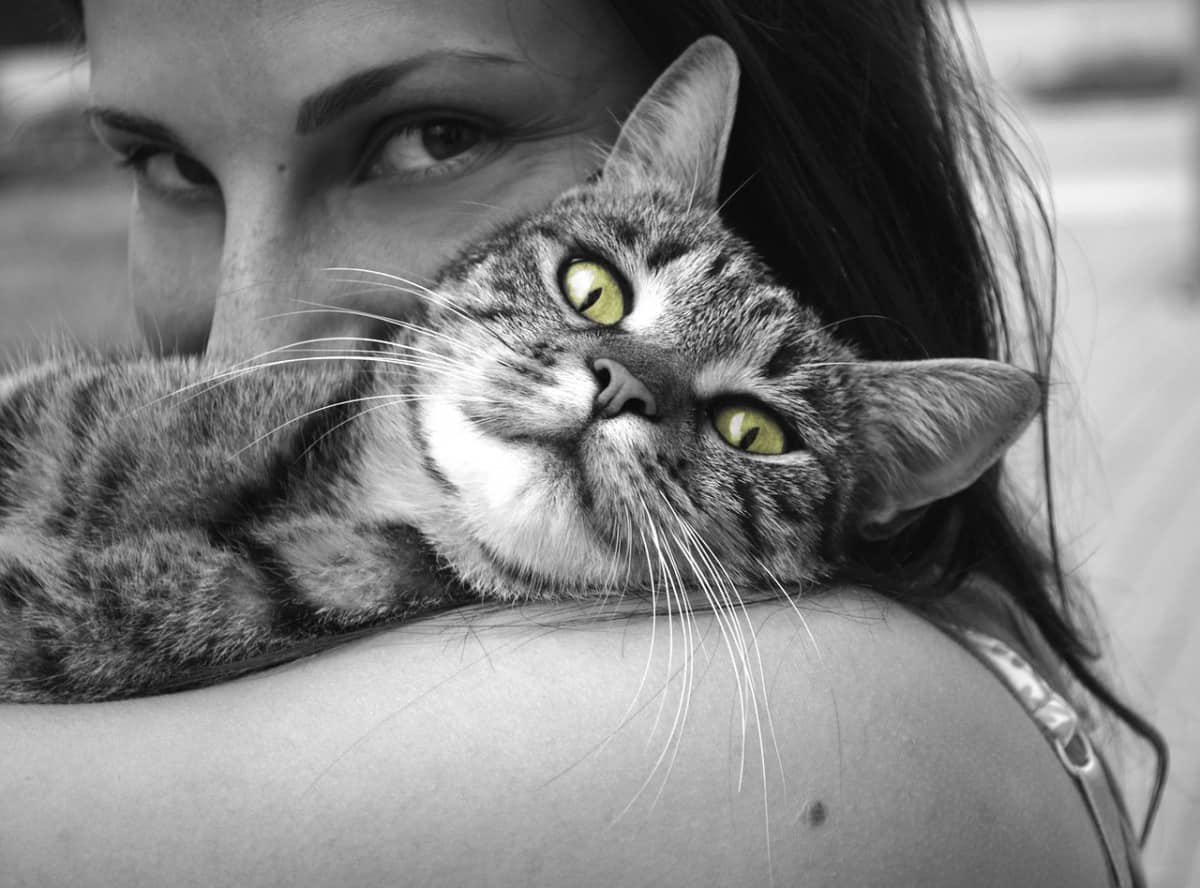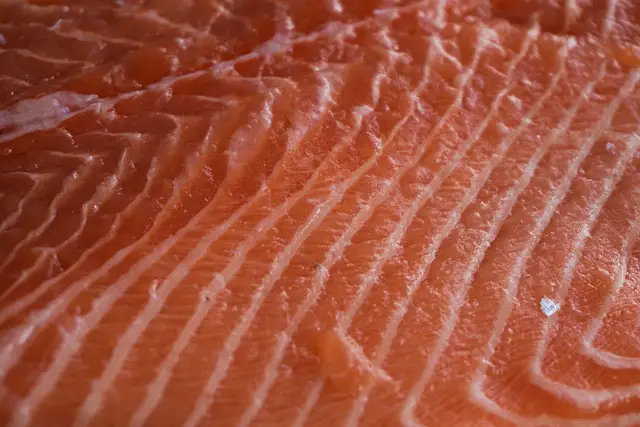If your cat is peeing outside the litter box and throwing up, it could indicate an underlying health issue. It could be anything from a urinary tract infection to kidney disease to gastrointestinal problems.
Your veterinarian can help you determine what is causing the issue so that proper treatment can begin.
Cats may sometimes eliminate outside the litter box due to stress or anxiety.
If so, your veterinarian can suggest medications or behavior modification techniques help your cat feel more comfortable.
Proper litter box maintenance can also affect whether cats use their litter boxes.
Ensure you have enough clean litter boxes for each of your cats, and they are placed in a quiet area away from high-traffic areas.
Clean the boxes regularly, and provide adequate litter for your cats.
Finally, it is essential to consult with your veterinarian if your cat is peeing outside the litter box and throwing up. This could be a sign of an underlying health issue that needs to be addressed.
Proper treatment and care can help your cat feel better and enjoy a happy, healthy life.
Cat Peeing Outside the Litter Box and Throwing Up: 3 Common Diseases
-
Chronic Renal Failure
-
Hyperthyroidism
-
Diabetes Mellitus
If we catch our cat peeing outside the litter box and throwing up frequently, it may be necessary to go to the vet right away, as its kidneys might be shutting down.
Kidneys, in and of themselves, are too important in a cat’s life to be ignored. After all, their main job is to regulate blood pressure, remove waste, stimulate the bone marrow to produce more red blood cells, and generate hormones. That said, kidney failure can be either acute or chronic.
When it’s acute renal failure, the condition’s onset is sudden and happens in mere days or weeks. It is often a result of the following:
- blockages
- infection
- trauma
- heart failure
- shock due to loss of blood or dehydration
- poison ingestions (antifreeze, for instance).
However, with proper treatment, we may reverse it in time.
On the other hand, chronic renal failure happens as the cat ages. Sometimes, blood and urine blockages or infections may not lead to acute failure but weaken the kidneys over the years. Additionally, other diseases, such as cancer and high blood pressure, may also play a role here.
If the cat has chronic renal failure, its kidneys probably have lost some function. However, they are still doing much of the work needed and producing urine. As a result, the cat will be thirstier than ever before too. The problem is that it will urinate so often that it won’t be able to get to its litter box on time or won’t want to “go” in a dirty one.
Other symptoms include vomiting, lethargy, and muscle loss, which will make the cat lose weight.
Treatment and Diagnosis
Blood and urine tests are a given here, but the vet will likely ask for an X-ray, a biopsy, or an ultrasound. If the kidneys fail, the treatment may vary depending on the cause. If there are some blockages, the cat will need to have surgery. Other forms of treatment include giving it IV fluids, putting it on a special diet, and treating it with medications at home.
Depending on the severity of the symptoms, you may be able to give the cat other medications as well. Since this is a progressive disease, the point is to keep the feline happy for as long as possible. Therefore, it’s not uncommon to include anti-vomiting drugs, appetite stimulants, vitamins, and other supplements in the treatment. Also, the vet will monitor the condition’s progression over the years to tweak the treatment when needed.
Hyperthyroidism
As the most common glandular disease in felines, hyperthyroidism occurs when too much thyroxine (thyroid hormone, also known as T4) is circulating in the bloodstream. The two most common reasons for the overproduction of the hormone are benign growth and thyroid gland tumor.
Abnormal growth could lead to other diseases that may endanger the cat’s life. Too high levels of thyroid hormones can mess up the functioning of the cat’s metabolism. Consequently, this could cause irreparable damage to other systems in its body.
However, if we catch our cat peeing outside the litter box and throwing up, we may not even think something is happening with its thyroid. These are just some of the symptoms that follow the condition.
The cat will be thirstier than ever and clump up litter quickly, which could make it eliminate outside of it. Additionally, it will vomit because the condition will hurt its gastrointestinal tract.
Unfortunately, we cannot know whether it’s hyperthyroidism based on these. Therefore, other symptoms, such as weight loss despite an increased appetite and behavioral changes (aggression, restlessness, increased vocalization), may help diagnose.
Treatment and Diagnosis
To rule out kidney failure and diabetes, the vet will ask for a chemistry panel, a urinalysis, and a CBC. Then, they’ll proceed with a thyroid hormone analysis if those come out clean.
More often than not, this test confirms hyperthyroidism. However, 2–10% of cats with the disease may have normal T4 levels. Therefore, the hormone may fluctuate if the condition is mild, leading to a false-negative result. On the other hand, it could be suppressed by another disease, such as diabetes, which may happen in older cats.
Ultimately, the vet may opt for more specialized testing to diagnose the disease. Once they confirm it, there are three treatment options in general:
- radioactive iodine therapy
- surgery (removal of the gland)
- oral medications (often Methimazole).
Diabetes Mellitus
When a cat cannot produce enough insulin to support its system, i.e., keep blood sugar and glucose levels in check, it may develop diabetes mellitus. As a known killer among humans, diabetes is another disease that’s a reason behind a cat peeing outside the litter box and throwing up.
Since diabetes itself will make the cat rather thirsty, it will develop a need to urinate more and more, often having to do it outside of the litter box out of sheer convenience at that moment. Vomiting, on the other hand, may not occur right away.
If the cat doesn’t receive treatment for diabetes mellitus, it may start losing its appetite and weight and throwing up, leading to dehydration. A severe condition may also cause depression, motor function issues, and, later, coma and death.
Treatment and Diagnosis
To diagnose diabetes, apart from looking into all the symptoms, the vet will have to check the cat’s blood glucose levels. If those aren’t too high, but the signs remain, they can support their diagnosis with a fructosamine and urine glucose test.
The most common form of treatment is insulin therapy, which should be combined with a high-protein diet. Since controlling the symptoms is crucial in the case of diabetes, the cat will also have to go in for regular check-ups.
At some point, it may not need insulin anymore, but it has to stay on the same diet to avoid complications. After that, the disease may go into remission, but the cat won’t be cured.
Cat Peeing Outside the Litter Box and Throwing Up?
About Feline Idiopathic Cystitis and Bladder Blockages
Although many conditions could hurt the cat’s lower urinary tract, the cause is often unknown. Thus, a bladder inflammation in cats without a recognizable cause is Feline Idiopathic Cystitis and is more common than you may have thought.
However, even in the case of idiopathic diseases, some underlying issues are wreaking havoc in the cat’s body. Those include stress and, particularly, abnormal stress responses. Other potential causes are neurogenic inflammation and a defective bladder lining.
The issue here is that the cat won’t vomit from cystitis. One of its main symptoms is periuria (the cat is peeing outside the litter box), straining to urinate, and blood in the urine. The vomiting starts if the disease isn’t treated on time. Any cat with cystitis could develop a urinary blockage, which may lead to a toxin buildup and death. Some of the most common signs of obstruction are nausea, vomiting, and weight loss.
Treatment and Diagnosis
If we catch our cat peeing outside the litter box and throwing up, the vet must perform various tests to determine cystitis. Since there isn’t a known cause, the diagnosis includes ruling out other conditions with similar symptoms. Because of that, the vet will analyze urine and the bacterial culture and perform an X-ray. In some cases, they may require an ultrasound to pinpoint the disease.
As far as treatment goes, it should be multimodal. This condition doesn’t respond to drugs, although the vet may prescribe some. If we rely only on drugs, the state will likely come back.
Instead, we would have to focus more on the cat’s diet and environment. We should stick to giving it wet food to increase the production of more dilute urine and boost its water intake overall. Additionally, we must work on stress reduction and lower the cat’s anxiety levels. We could provide more hiding places (cats love their privacy, after all) and introduce pheromone therapy.
Final Thoughts
As you can probably tell, most of the diseases we’ve discussed come with similar symptoms. A bladder infection is one of the most common causes of peeing outside the litter box. However, the disease that mimics the symptoms of that condition is bladder cancer, which can cause vomiting and polyuria (frequent urination) as well.
Ultimately, you cannot diagnose your cat by looking for telltale signs. If you catch your cat peeing outside the litter box and throwing up, get it to the vet fast. It’s best to rule out any potentially lethal conditions. Who knows? It may be just a phase. On the other hand, the reason could be far more sinister and might require medications, surgery, or a complete lifestyle overhaul.
[su_box title=”Affiliate Disclosure”]This website is supported by its readers. Please assume that all links are affiliate links. If you make a purchase from one of the links we will make a commission from Amazon. Thank you.[/su_box]





